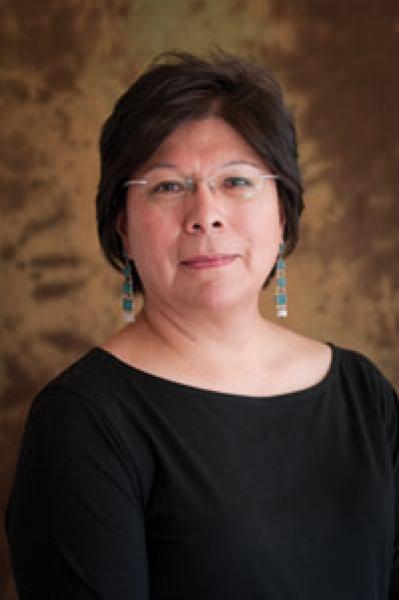 As late summer approaches, we can all reflect on the last months of extremely hot days, dry conditions, and unusual changing weather patterns. Increasingly as we experience climate change and link the causes to our behaviors as human beings, we must accept responsibility and take action for the sake of future generations. We face an ecological crisis compounded by global economic instability that...
As late summer approaches, we can all reflect on the last months of extremely hot days, dry conditions, and unusual changing weather patterns. Increasingly as we experience climate change and link the causes to our behaviors as human beings, we must accept responsibility and take action for the sake of future generations. We face an ecological crisis compounded by global economic instability that...
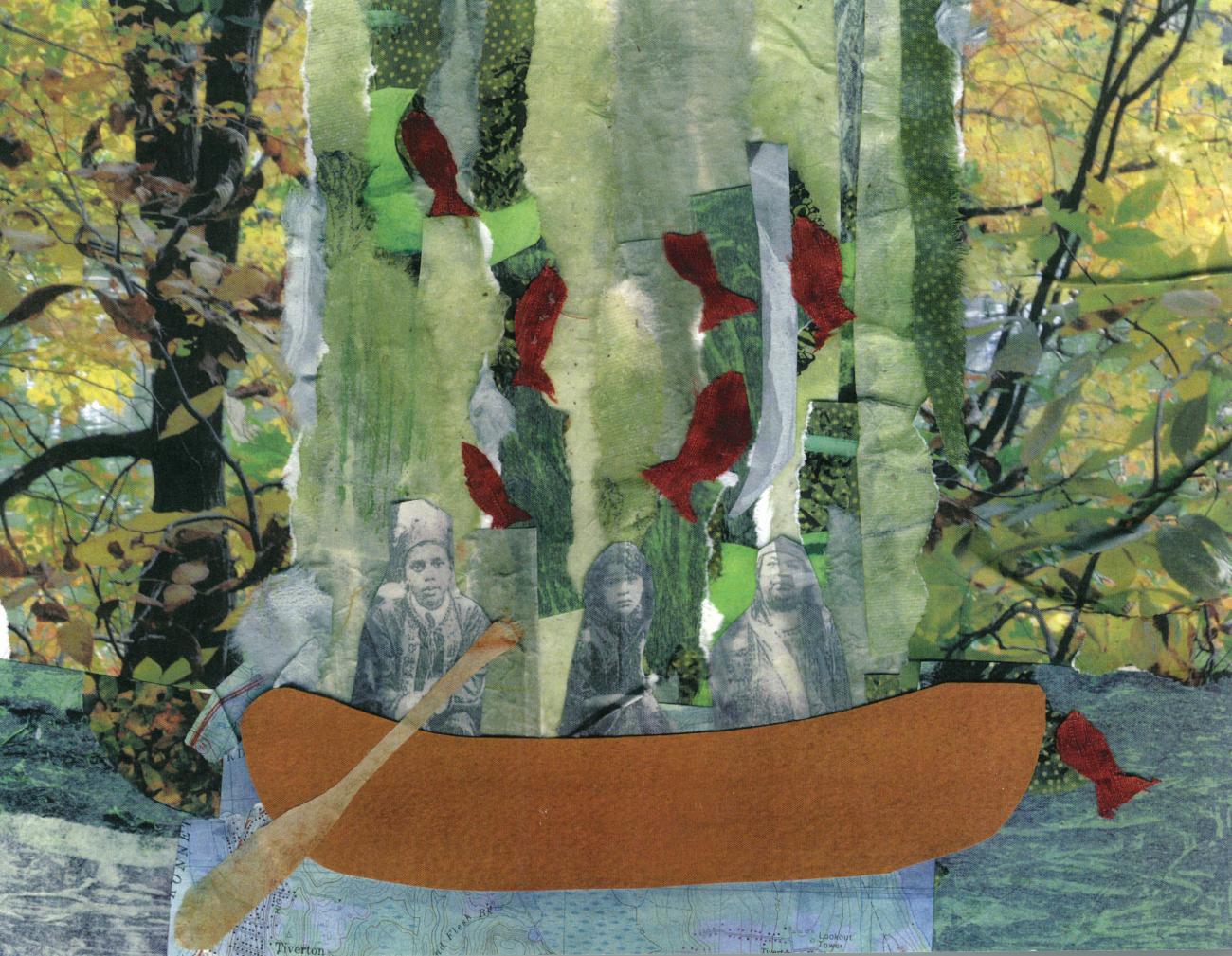 Through Our Eyes: An Indigenous View of Mashapaug Pond is the culmination of a yearlong project between Rhode Island’s Narragansett community and artist Holly Ewald, founder of the Urban Pond Procession. This book of environmentally-themed collage art presents Indigenous perspectives on the history of theMashapaug Pond, the last remaining natural freshwater body in Providence, Rhode...
Through Our Eyes: An Indigenous View of Mashapaug Pond is the culmination of a yearlong project between Rhode Island’s Narragansett community and artist Holly Ewald, founder of the Urban Pond Procession. This book of environmentally-themed collage art presents Indigenous perspectives on the history of theMashapaug Pond, the last remaining natural freshwater body in Providence, Rhode...
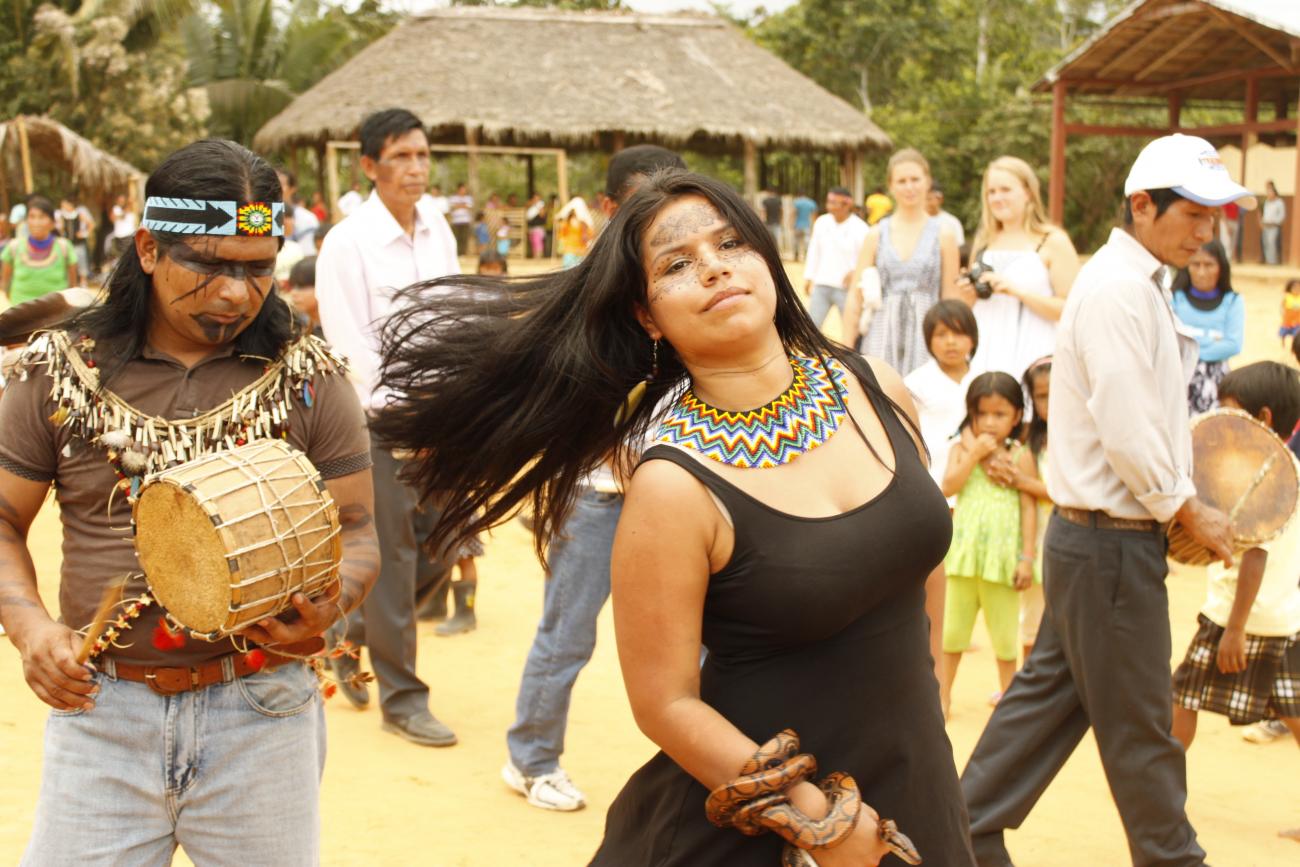 In 2012, the Inter-American Court of Human Rights ruled in favor of the Sarayaku in the case of Sarayaku v. Ecuador, affirming and upholding the right of free, prior and informed consent (FPIC) of Indigenous Peoples along with the standards for its application. The ruling marks the end of a decade-long legal battle the Sarayaku have been fighting since a foreign oil company was allowed to...
In 2012, the Inter-American Court of Human Rights ruled in favor of the Sarayaku in the case of Sarayaku v. Ecuador, affirming and upholding the right of free, prior and informed consent (FPIC) of Indigenous Peoples along with the standards for its application. The ruling marks the end of a decade-long legal battle the Sarayaku have been fighting since a foreign oil company was allowed to...
 In the quiet forested valley of Santa Cruz Barillas, Huehuetenango, three men were walking home from the town’s annual fair alongside the bubbling Q’am B’alam River. The river, which means “Yellow Tiger” in the local Q’anjob’al Mayan language, has been at the center of conflict in the community since the Spanish company Hidralia Energia began prospecting the area in 2009 for the building of a dam...
In the quiet forested valley of Santa Cruz Barillas, Huehuetenango, three men were walking home from the town’s annual fair alongside the bubbling Q’am B’alam River. The river, which means “Yellow Tiger” in the local Q’anjob’al Mayan language, has been at the center of conflict in the community since the Spanish company Hidralia Energia began prospecting the area in 2009 for the building of a dam...
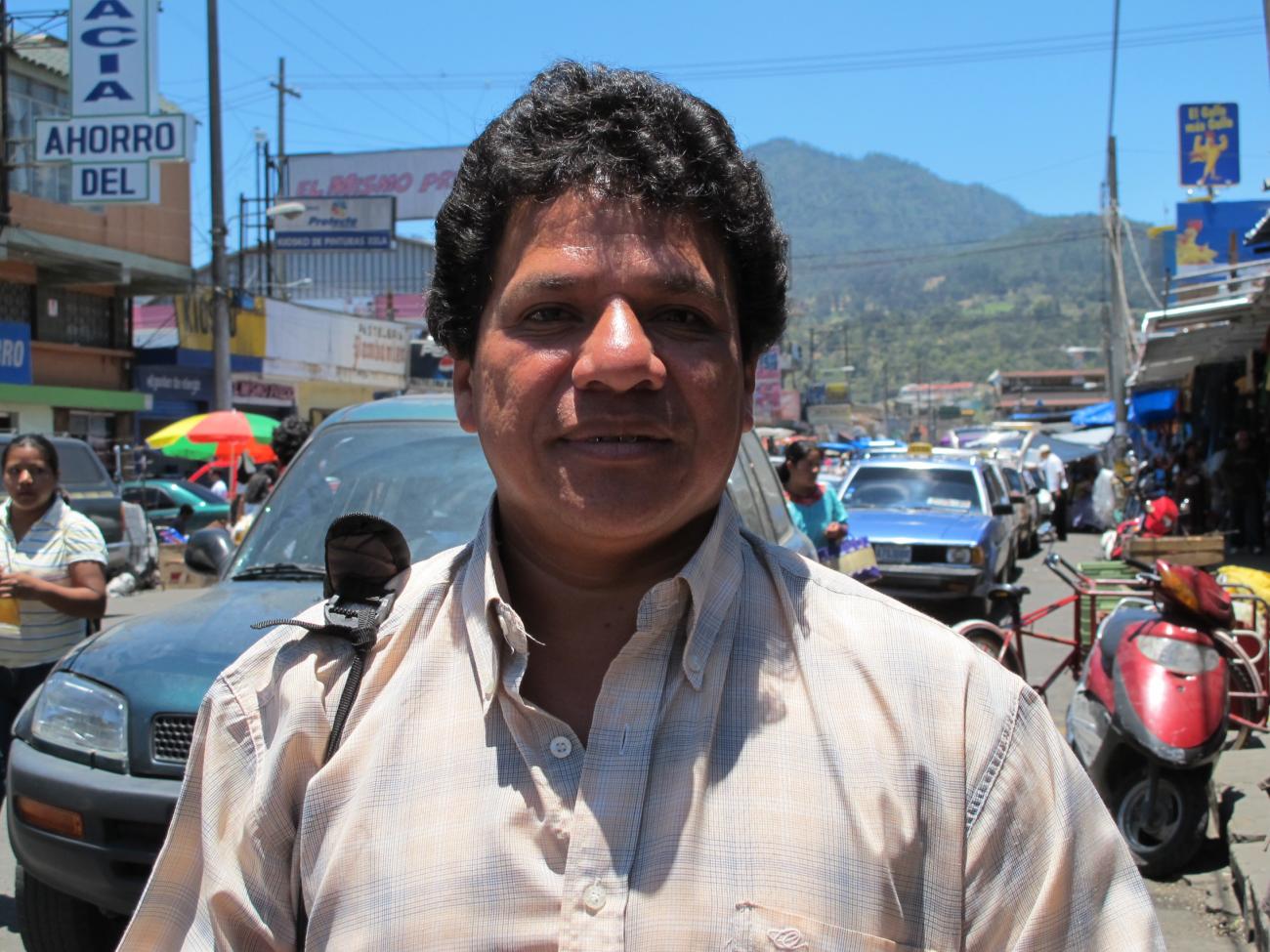 On July 7–8, 2012, members of 15 community radio stations partnering with Cultural Survival’s radio network across Guatemala gathered for a workshop in the Mujb’ab’l Yol training center in San Mateo, Quetzaltenango. The workshop focused on the difficult topic of historical memory of Guatemala’s 36-year armed conflict, which claimed the lives of 200,000 mostly Indigenous people. With the goal of...
On July 7–8, 2012, members of 15 community radio stations partnering with Cultural Survival’s radio network across Guatemala gathered for a workshop in the Mujb’ab’l Yol training center in San Mateo, Quetzaltenango. The workshop focused on the difficult topic of historical memory of Guatemala’s 36-year armed conflict, which claimed the lives of 200,000 mostly Indigenous people. With the goal of...
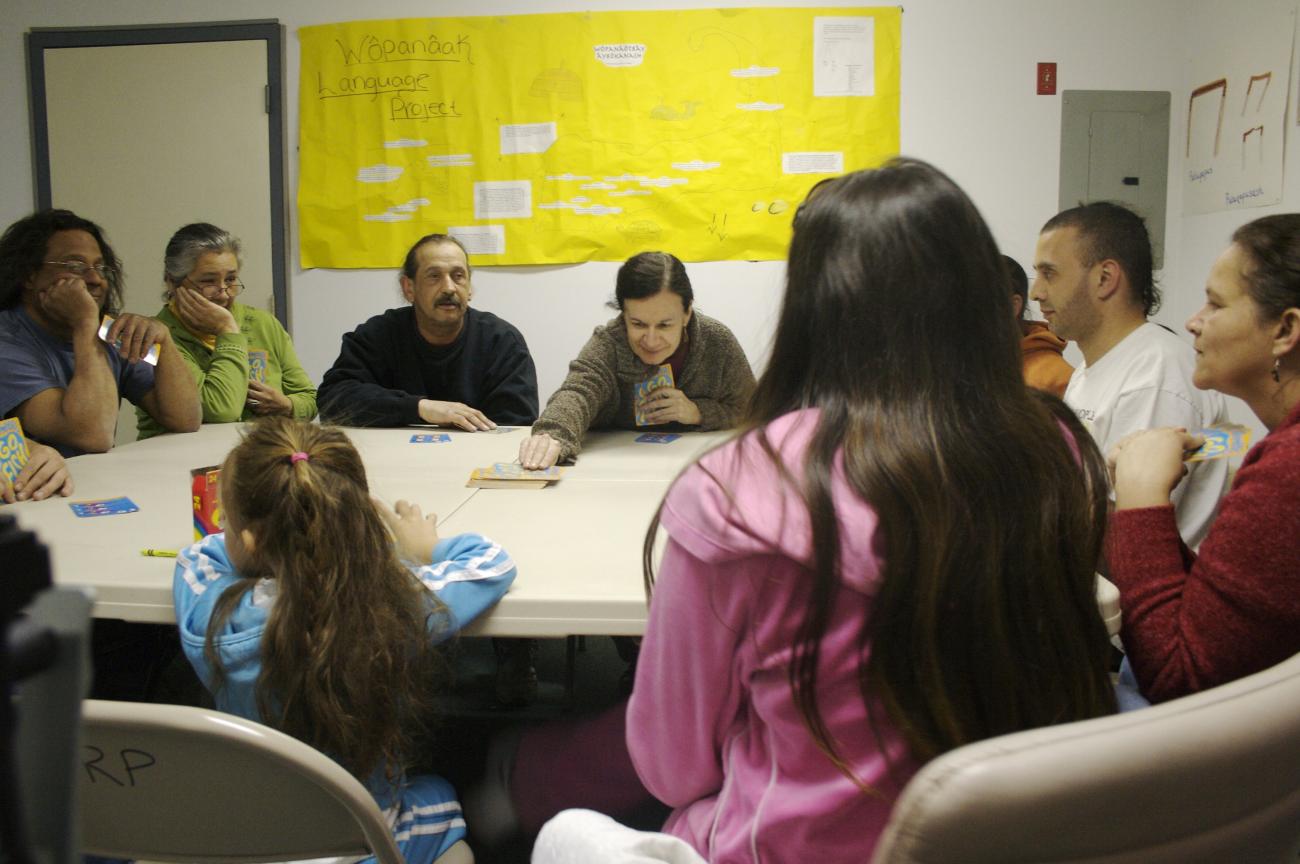 "Indigenous Peoples have the right to establish and control their educational systems and institutions providing education in their own languages, in a manner appropriate to their cultural methods of teaching and learning." -- United Nations Declaration on the Rights of Indigenous Peoples, Article 14.Native Americans lost control of their children’s education over a century ago, when the...
"Indigenous Peoples have the right to establish and control their educational systems and institutions providing education in their own languages, in a manner appropriate to their cultural methods of teaching and learning." -- United Nations Declaration on the Rights of Indigenous Peoples, Article 14.Native Americans lost control of their children’s education over a century ago, when the...
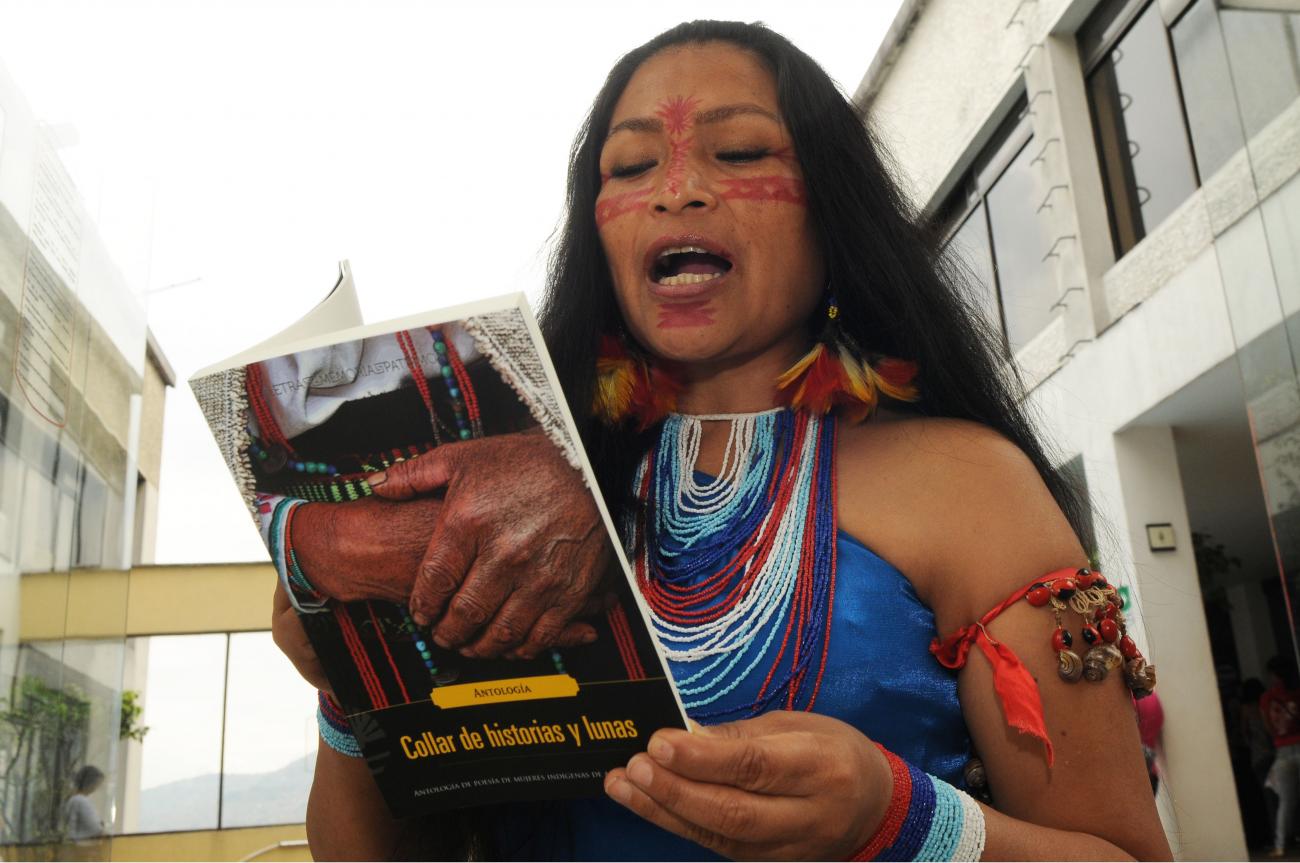 By Nataly KellyMuch has been written about the Shuar, an Indigenous group from the Ecuadorian Amazon; many words have been used to describe them. Warriors, head-shrinkers, and shamans are some of the most common associations. But one word that is not typically seen in reference to the Shuar? Poet. Until now, that is—especially if María Clara Sharupi Jua has anything to say about it.As...
By Nataly KellyMuch has been written about the Shuar, an Indigenous group from the Ecuadorian Amazon; many words have been used to describe them. Warriors, head-shrinkers, and shamans are some of the most common associations. But one word that is not typically seen in reference to the Shuar? Poet. Until now, that is—especially if María Clara Sharupi Jua has anything to say about it.As...
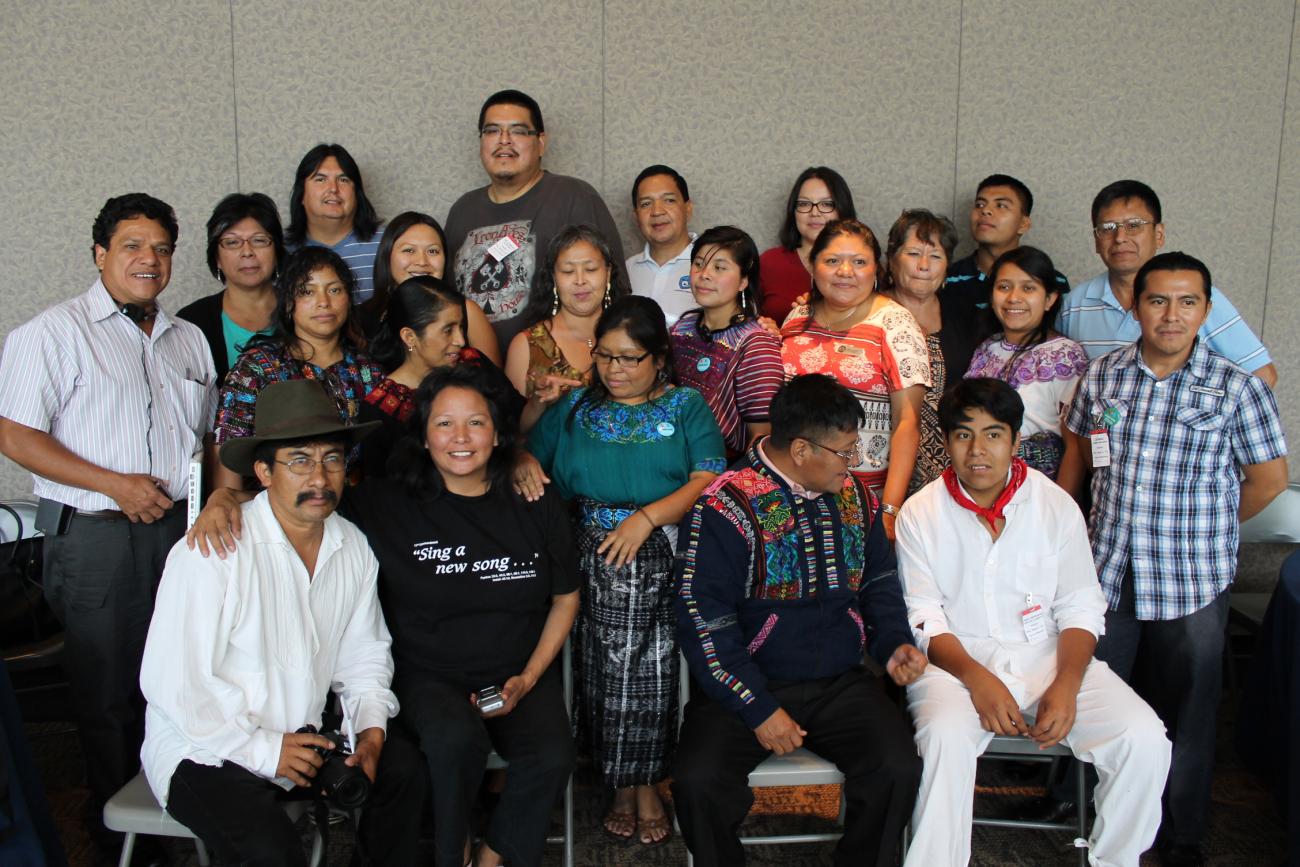 A rising hum of Mayan, Euchee, Lakota, Maori, Mixtec, Spanish, English, and myriad other diverse languages, followed by moments of calm during an openingprayer, signaled the start of a three-day language revitalization and radio conference on the top floor of the Smithsonian’s National Museum of Natural History in Washington, DC. Thirty Indigenous language teachers, speakers, and learners who...
A rising hum of Mayan, Euchee, Lakota, Maori, Mixtec, Spanish, English, and myriad other diverse languages, followed by moments of calm during an openingprayer, signaled the start of a three-day language revitalization and radio conference on the top floor of the Smithsonian’s National Museum of Natural History in Washington, DC. Thirty Indigenous language teachers, speakers, and learners who...
 “Farce” and “failure” are a few choice words that Indigenous Peoples have used to describe Rio+20, known officially as the United Nations World Conference on Sustainable Development. The conference, held from June 20-22, was a follow up to the 1992 UN Conference on Environment and Development, a.k.a., the Earth Summit. With over 50,000 registered participants, the Rio de Janeiro-based event was...
“Farce” and “failure” are a few choice words that Indigenous Peoples have used to describe Rio+20, known officially as the United Nations World Conference on Sustainable Development. The conference, held from June 20-22, was a follow up to the 1992 UN Conference on Environment and Development, a.k.a., the Earth Summit. With over 50,000 registered participants, the Rio de Janeiro-based event was...
 It seems the closer we get to December 21, 2012, the more we hear the “doomsday” myth repeated. It shows up in films, television commercials, cable specials, and print ads. To Maya priests, however, December 21, 2012, or Oxlajuj Baktum, does not signal the end of the world. The date actually marks the end of a 5,129-year Long Count calendar cycle, the end of one cycle and the beginning of another...
It seems the closer we get to December 21, 2012, the more we hear the “doomsday” myth repeated. It shows up in films, television commercials, cable specials, and print ads. To Maya priests, however, December 21, 2012, or Oxlajuj Baktum, does not signal the end of the world. The date actually marks the end of a 5,129-year Long Count calendar cycle, the end of one cycle and the beginning of another...
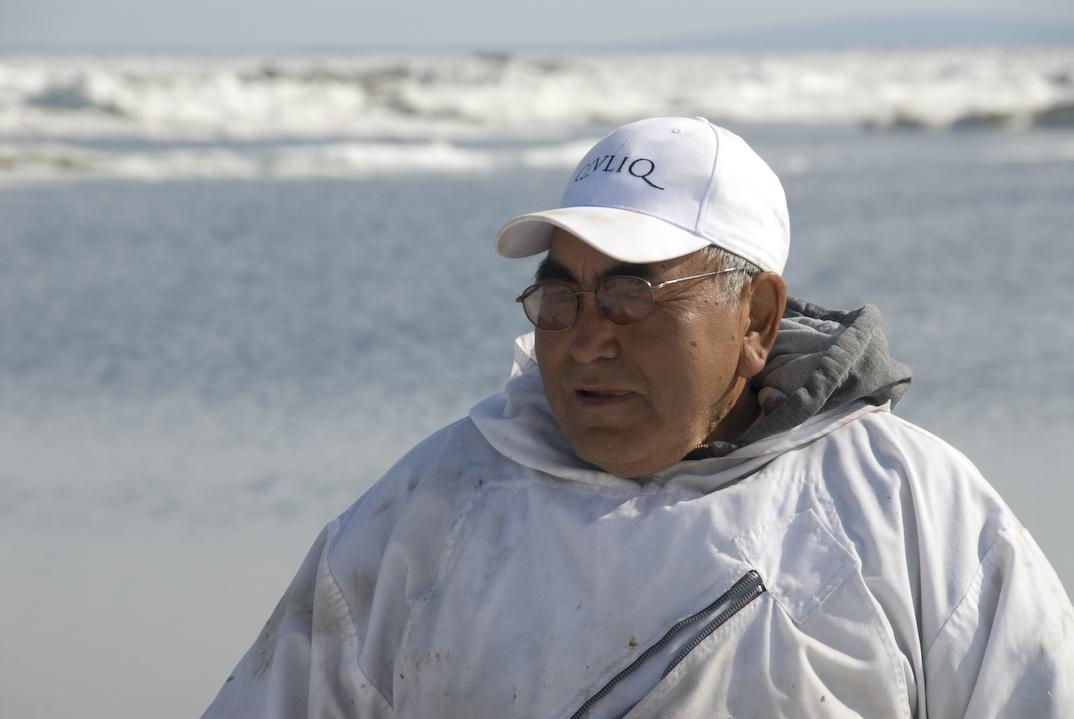 For the Iñupiaq people of Alaska, as with many Indigenous groups, subsistence is a crucial avenue for passing on cultural knowledge, sustaining economic livelihood, feeding the population, and constituting the local diet. Among the Iñupiaq, subsistence-based livelihood is neither a dwindling practice nor a “traditional relic” relegated to only a few members of the older generations.In fact, far...
For the Iñupiaq people of Alaska, as with many Indigenous groups, subsistence is a crucial avenue for passing on cultural knowledge, sustaining economic livelihood, feeding the population, and constituting the local diet. Among the Iñupiaq, subsistence-based livelihood is neither a dwindling practice nor a “traditional relic” relegated to only a few members of the older generations.In fact, far...
Support Indigenous writers and journalists. This content is made entirely possible by loyal readers like you. Cultural Survival does not believe in paywalls. We rely on our supporters and readers to give what they can so that we can continue bringing you Indigenous-led solutions.
Our website houses close to five decades of content and publishing. Any content older than 10 years is archival and Cultural Survival does not necessarily agree with the content and word choice today.